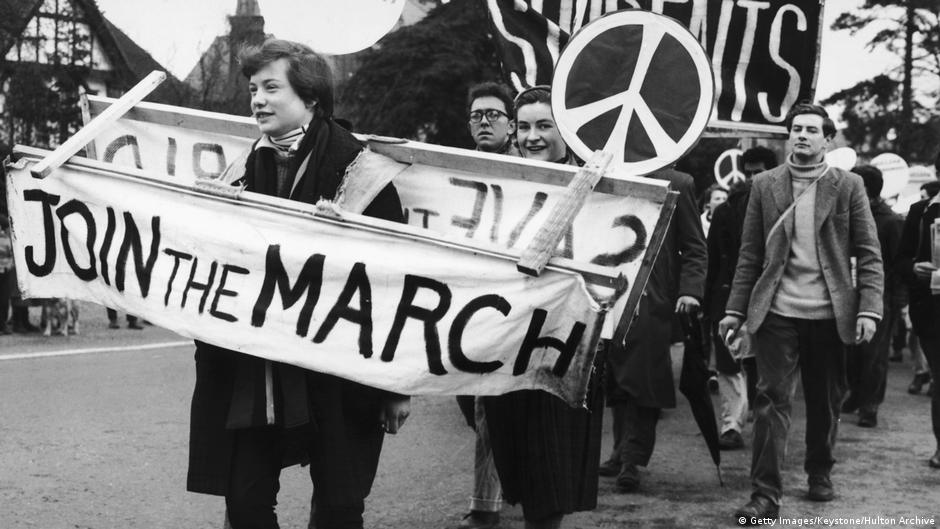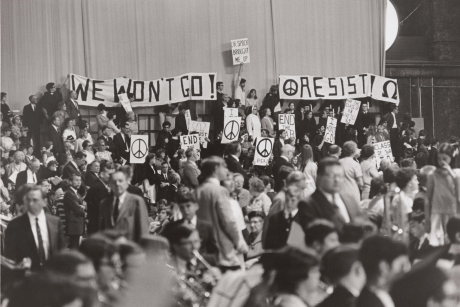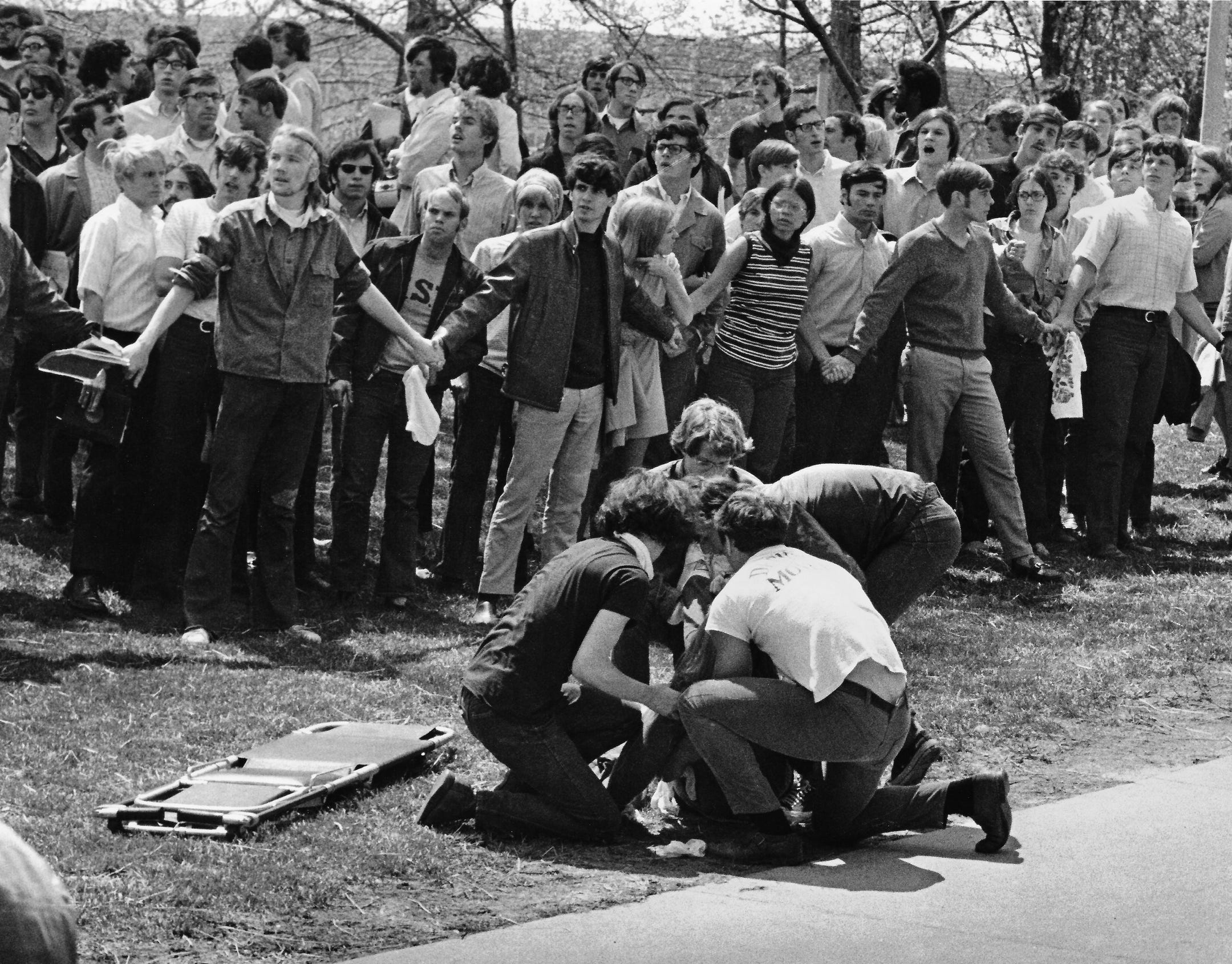Background- The hippie movement was brought to light when the Vietnam protests arose in the 1960's. Although this was not directly related to the political protests they did participate in some. Striving for peace and love they took the streets turning the heads of many with their bright colored clothing, long hair and "dirty" appearances. They stood for rebellion of the typical modern American lifestyle and lived openly and freely.
Repetition of No on the poster in the middle
Specific choices are inferred of love or war on the Poster
Superlative of comparing love & war to be similar
The unsustained loss to avoid war= avoid loss
Scesis onomaton when synonymous statements are made on each poster
geometric spacing with the illusion of depth and space within the picture
full frame with focalizers of posters at an eye level shot
Black or White with the assumption of "Love or War"
https://rb.gy/9a7ylq
Anti-model of what you normally do with a gun pointed at your face
Metaphor used by putting a symbol of peace into a symbol of death
Black and white with steady shadows
With a illusion of depth and at a high angle to where we are looking down on them
Appeal to consequence as flowers in the guns wont allow them to shoot
Wishful thinking that they wont still shoot the guns
The next article I chose to analyze is a primary source. It is a news article written by Mark Harris in the September Issue of 1967 in the Atlantic news paper.
Harris, M. (2018, April 12). The Flowering of the Hippies. The Atlantic. https://www.theatlantic.com/magazine/archive/1967/09/the-flowering-of-the-hippies/306619/
After reading this article my perceptions of the Hippie movement have been altered. I was misinformed about the true reality of the Hippie movement and how it shaped our country in that day and age originally. I believed that (this may sounds stupid but I really was just uninformed) that the hippy movement was a group of free spirits standing up to the social norms and creating their own free path. However after reading this article I realized how large of an effect pot and LSD had on this movement. What started out as a centralized goal became a jumbled mess of people taking LSD and talking about what it did to them in their last trip. Their motive in the 60's was very unclear to many and that is why people protested back. They believed that this movement had no end goal and was just a off course party that would drag our soon to be working class down. Many dropped out of college to join and had no steady income. This movement phased out faster than most but left an everlasting impact on society. Many to this day still follow the hippy lifestyle however it is not as popular as just dressing like one in todays society.
Three Connective Theories
Burke's Grotesque frame- this theory of framing is described as depicting something or someone as obscure, out of the norm or out of place. This directly connects to how the American society viewed the hippies in the 60's. They weren't sure what they were doing or why but since it was so abstract from the normalcy many looked down on them and placed the hippies into this frame.
Carlson- This theory connects to the hippie movement by providing answers of why it died off so quickly. In his paper he states that movements must have some kind of religious conviction within its roots to maintain a strong foundation. The hippy movement has no religious affiliation whatsoever. He also states that they must sacrifice something to make a big public awareness of their movement. Not everyone but someone must do this. In the hippie movement they relied off of peace and good vibes which does not constitute a strong foundation.
Karshner- In his writings he writes about adequately thinking out their actions before preforming them. Which allows me to connect this as another critique of the hippy movement because no one really knew their plan or their end goal. And after researching I am not sure if the hippies knew either. They started as "Make love not war" and ended into a spiral of LSD and other various drugs. If they had an end goal then they just did not publicize it enough. But from what I have gathered their leaders would benefit from reading this article as it proved, that even over time, developing and strategizing will help you get to where you want to go.
Overall I believe my presentation will consist of critiquing the hippy movement and analyzing what they did and where they went wrong. And how this left a foot print on the America we know today, and not just by their fashion.







































